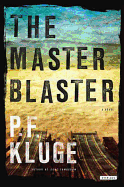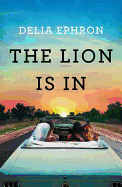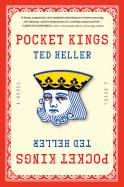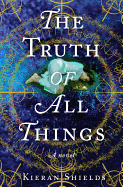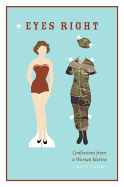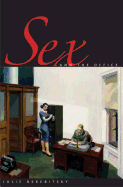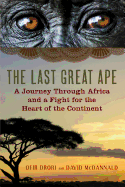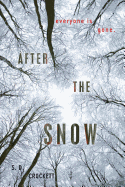In late January, the New Yorker published "Groupthink," an article by Jonah Lehrer that directly challenged, in the words of its subheadline, "the brainstorming myth." Drawing upon material from his third book, Imagine: How Creativity Works, Lehrer discussed the ways in which research has demonstrated that brainstorming in groups, rather than freeing the participants' imaginations, actually makes them less creative than they might be if they tried to tackle the subject themselves. The idea was hotly disputed.
 When I met Lehrer in the offices of his publisher, Houghton Mifflin Harcourt, on the first day of his Imagine book tour, I asked if he'd been caught off guard by the vociferous reaction. "Brainstorming is the most popular creativity technique of all time," he said. "There's a whole industry built around it. So I understand that people would want to defend it." He even conceded that there's a practical aspect to an environment where anyone can bring an idea to the table. "In a real workplace, you need to see these people every day," he said; keeping a critical culture from descending into a recurring cycle of nasty criticism is a real challenge. (Although, as the sections in Imagine on the Pixar morning meetings show, it's not an impossible one.) "What the data is pretty clear on, though," he said, "is that brainstorming holds us back."
When I met Lehrer in the offices of his publisher, Houghton Mifflin Harcourt, on the first day of his Imagine book tour, I asked if he'd been caught off guard by the vociferous reaction. "Brainstorming is the most popular creativity technique of all time," he said. "There's a whole industry built around it. So I understand that people would want to defend it." He even conceded that there's a practical aspect to an environment where anyone can bring an idea to the table. "In a real workplace, you need to see these people every day," he said; keeping a critical culture from descending into a recurring cycle of nasty criticism is a real challenge. (Although, as the sections in Imagine on the Pixar morning meetings show, it's not an impossible one.) "What the data is pretty clear on, though," he said, "is that brainstorming holds us back."
Imagine tackles the science behind creativity from a number of angles, always drawing upon real-life examples; as Lehrer joked, "I wanted an excuse to hang out with Yo-Yo Ma and talk to Milton Glaser and loiter at the Pixar studios." Some readers may see it as a return to the blend of science and art that marked his debut book, Proust Was a Neuroscientist; for his own part, Lehrer said, he's "always just been drawn to the mystery" of creative inspiration, and let the subject guide him as he went along. "I tried to go into these interviews totally naively, totally ignorant of what role in the story they might play," he explained.
While Lehrer can be charmingly self-deprecating about his work--"most of what I write about is three pounds of meat"--he's careful when it comes to the growing subgenre of "the New Science of X" books, into which his own work might be loosely placed. "I try to avoid a lot of those books to avoid the anxiety of influence," he said, preferring to skip over them and head straight to the peer-reviewed journals to learn about the latest research. He wants, when he writes, to avoid the easy trap of using neuroscience as a crutch, like suggesting that since men are aroused by looking at pictures of women in bikinis, that imagery could be used profitably in advertising. That so-called insight isn't any more original, he said, just because you could describe the phenomenon in terms of stimulating the visual cortex.
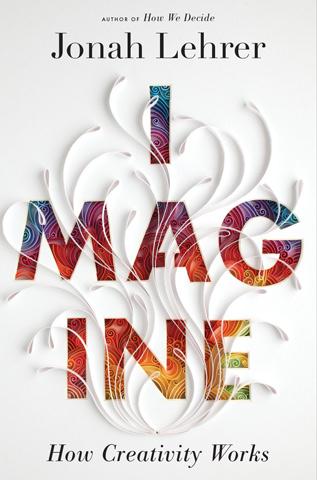 What about potential roadblocks to creativity? "I'm not of the 'Google is making us stupid' school," he said. "Attention is feeble. Even before Google, we were distractible creatures. But I also don't think the Internet is a replacement for the connections we already have." Despite enthusiastic predictions of mass "telecommuting" at the beginning of the dot-com boom, he sees cities as more valuable in their role as creative incubators than ever before. The stakes are higher in the 21st century, and the answers we think up to the problems we face have to rise to the occasion. To that end, "There's something magical when people get together in person, bumping into other people."
What about potential roadblocks to creativity? "I'm not of the 'Google is making us stupid' school," he said. "Attention is feeble. Even before Google, we were distractible creatures. But I also don't think the Internet is a replacement for the connections we already have." Despite enthusiastic predictions of mass "telecommuting" at the beginning of the dot-com boom, he sees cities as more valuable in their role as creative incubators than ever before. The stakes are higher in the 21st century, and the answers we think up to the problems we face have to rise to the occasion. To that end, "There's something magical when people get together in person, bumping into other people."
"What surprised me," he added, "is how much of [Imagine] turned out not to be about the brain, but about the sociology of creativity.... It's about culture, and context, and collaboration." The book's later chapters, which probe topics like the reliability of certain types of urban environments as creative hotbeds, led to changes in Lehrer's own work dynamic. "The second half of the book made me much more willing to talk to strangers," he said, "to pursue the random conversation standing in line for a latte, to talk to the person sitting next to me on a plane... I now force myself to make small talk."
That's not the only change in his routine. "I used to have a very puritanical notion," he continued. "When I was stuck, I would force myself to work. Now I'm much more willing to take a break." He cited a quote from Einstein, about creativity as the residue of wasted time. "I'm much more willing now to waste some time." On the other hand, despite research that shows blue walls can help spur insightful thinking, the walls in his office are still white. "Writing, like so many pursuits, is a little bit red room, a little bit blue room."
Red is supposed to heighten alertness and attention to detail; much like, as Lehrer discusses in one chapter, the poet W.H. Auden would start each morning with coffee and Benzedrine, producing increased levels of dopamine in his brain synapses that would enable him to focus on his verse with laser precision. "Being able to fixate on an abstract metaphor for hours at a time.... It's going to make your poetry cleaner," Lehrer explained. He envies that quality of the poems Auden produced during this period, but not enough to follow him down that path, "although I do envy it enough to do a triple espresso now and again." --Ron Hogan
Jonah Lehrer: What's Behind Creativity?
 Already the wave of commemorations has begun, marked by the launch this week of the 3D version of James Cameron's blockbuster movie, which set records when it appeared in 1997 in mere 2D, including 15 weeks in a row at #1 and 11 Oscars. As if that's not enough, there's a new four-part ABC miniseries, Titanic, from the writer of Downton Abbey, and Titanic: Blood and Steel, a 12-part series focusing on the construction and sinking of the Titanic.
Already the wave of commemorations has begun, marked by the launch this week of the 3D version of James Cameron's blockbuster movie, which set records when it appeared in 1997 in mere 2D, including 15 weeks in a row at #1 and 11 Oscars. As if that's not enough, there's a new four-part ABC miniseries, Titanic, from the writer of Downton Abbey, and Titanic: Blood and Steel, a 12-part series focusing on the construction and sinking of the Titanic.


 When I met Lehrer in the offices of his publisher, Houghton Mifflin Harcourt, on the first day of his Imagine book tour, I asked if he'd been caught off guard by the vociferous reaction. "Brainstorming is the most popular creativity technique of all time," he said. "There's a whole industry built around it. So I understand that people would want to defend it." He even conceded that there's a practical aspect to an environment where anyone can bring an idea to the table. "In a real workplace, you need to see these people every day," he said; keeping a critical culture from descending into a recurring cycle of nasty criticism is a real challenge. (Although, as the sections in Imagine on the Pixar morning meetings show, it's not an impossible one.) "What the data is pretty clear on, though," he said, "is that brainstorming holds us back."
When I met Lehrer in the offices of his publisher, Houghton Mifflin Harcourt, on the first day of his Imagine book tour, I asked if he'd been caught off guard by the vociferous reaction. "Brainstorming is the most popular creativity technique of all time," he said. "There's a whole industry built around it. So I understand that people would want to defend it." He even conceded that there's a practical aspect to an environment where anyone can bring an idea to the table. "In a real workplace, you need to see these people every day," he said; keeping a critical culture from descending into a recurring cycle of nasty criticism is a real challenge. (Although, as the sections in Imagine on the Pixar morning meetings show, it's not an impossible one.) "What the data is pretty clear on, though," he said, "is that brainstorming holds us back." What about potential roadblocks to creativity? "I'm not of the 'Google is making us stupid' school," he said. "Attention is feeble. Even before Google, we were distractible creatures. But I also don't think the Internet is a replacement for the connections we already have." Despite enthusiastic predictions of mass "telecommuting" at the beginning of the dot-com boom, he sees cities as more valuable in their role as creative incubators than ever before. The stakes are higher in the 21st century, and the answers we think up to the problems we face have to rise to the occasion. To that end, "There's something magical when people get together in person, bumping into other people."
What about potential roadblocks to creativity? "I'm not of the 'Google is making us stupid' school," he said. "Attention is feeble. Even before Google, we were distractible creatures. But I also don't think the Internet is a replacement for the connections we already have." Despite enthusiastic predictions of mass "telecommuting" at the beginning of the dot-com boom, he sees cities as more valuable in their role as creative incubators than ever before. The stakes are higher in the 21st century, and the answers we think up to the problems we face have to rise to the occasion. To that end, "There's something magical when people get together in person, bumping into other people."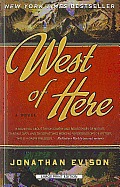 Jonathan Evison's
Jonathan Evison's  When two scholars discover a secret love affair between two Victorian poets in A.S. Byatt's Possession, they seek to unravel the mystery of the literary figures they have come to know so well. Byatt incorporates the poetry and letters of these poets within the text of her own story, resulting in a novel of parallel romances that is enticing, compelling and insightful.
When two scholars discover a secret love affair between two Victorian poets in A.S. Byatt's Possession, they seek to unravel the mystery of the literary figures they have come to know so well. Byatt incorporates the poetry and letters of these poets within the text of her own story, resulting in a novel of parallel romances that is enticing, compelling and insightful.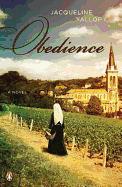 In her debut novel,
In her debut novel, 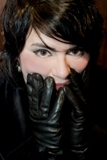 I've always been fascinated with con artists. With the Curse Workers series, I finally got to explore that. As the final book, Black Heart, publishes, I say goodbye to my con artist antihero, Cassel Sharpe, tormented by his love for a mobster's daughter, by the myriad secrets of his past and by his desire to be a good person--even though he's not sure he knows how. But I learned a lot along the way.
I've always been fascinated with con artists. With the Curse Workers series, I finally got to explore that. As the final book, Black Heart, publishes, I say goodbye to my con artist antihero, Cassel Sharpe, tormented by his love for a mobster's daughter, by the myriad secrets of his past and by his desire to be a good person--even though he's not sure he knows how. But I learned a lot along the way.